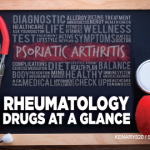According to findings published in the August 2015 issue of Arthritis Care & Research, “The risk of hospitalization for … serious infections, [such as pneumonia and sepsis], ranged from 12 to 24 times higher in patients with systemic lupus erythematosus (SLE) than in the general population.”
Maria G. Tektonidou, MD, and colleagues from the First Department of Internal Medicine, School of Medicine, University of Athens, used 1996–2011 data from the Nationwide Inpatient Sample (NIS) from the Healthcare Cost and Utilization Project of the Agency for Healthcare Research and Quality to examine the risks and burdens of serious infectious diseases in U.S. adult patients with SLE compared with the general population. For both SLE and non-SLE populations, the researchers examined trends in the hospitalization and in-hospital mortality for five infections: pneumonia, sepsis, urinary tract infections, skin and soft-tissue infections, and opportunistic infections.
Over the past two decades, hospitalization for infections increased substantially for SLE patients and is 12 times more likely when compared with non-SLE patients. The data showed that pneumonia was the most commonly occurring infection, with incidence of hospitalization increasing from 3.1% in 1996 to 5.4% in 2011. Also, rates for sepsis and skin infections tripled in that time. For the general population, hospitalization rates also increased greatly, with a 52% increase for skin infections and a 190% increase for sepsis. These rates in the non-SLE population are attributed to an aging population, comorbidities and a greater use of medical interventions.
Additionally, researchers found that in-hospital mortality decreased over the course of the study period, which may reflect advances in diagnosis and management or the admission of less ill patients. SLE patients with opportunistic infections had the highest in-hospital risk of death. And the use of medical ventilation was also associated with a high risk of mortality for SLE patients with opportunistic infections, severe pneumonia and severe sepsis.
Infections remain a source of morbidity for patients with SLE, and the cause(s) of this accelerated infection rate remains unclear. Researchers suspect that the use of immunosuppressive medications might play a role. They also note that, like the general population, SLE patients are living longer, with more comorbidities, as well as organ damage, increasing the risk of infection.
Tektonidou MG, Wang Z, Dasgupta A, Ward MM. Burden of serious infections in adults with systemic lupus erythematosus: A national population-based study, 1996–2011. Arthritis Care Res (Hoboken). 2015 Aug;67(8):1078–1085.



